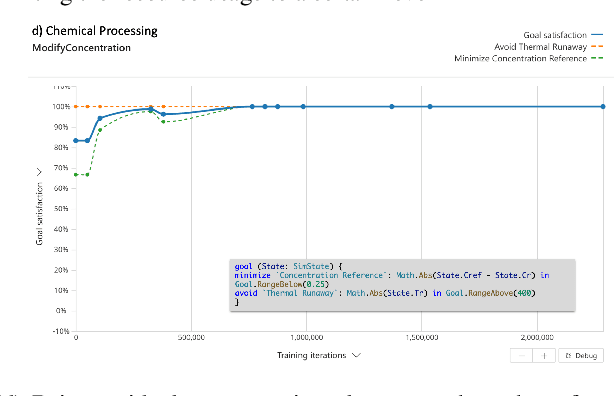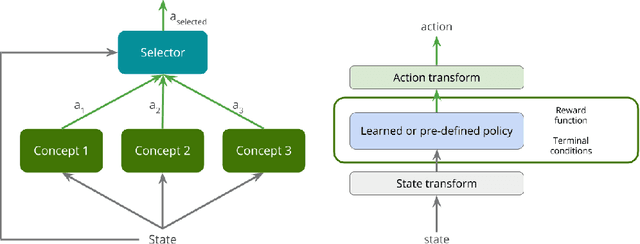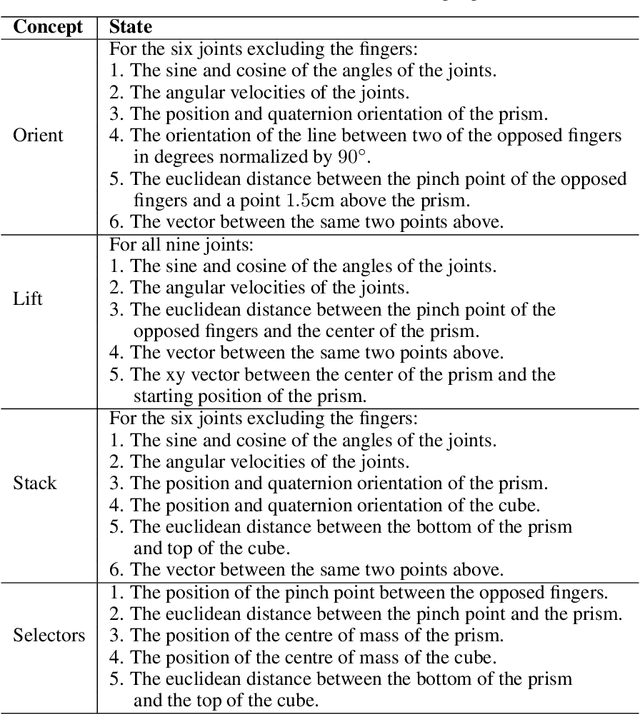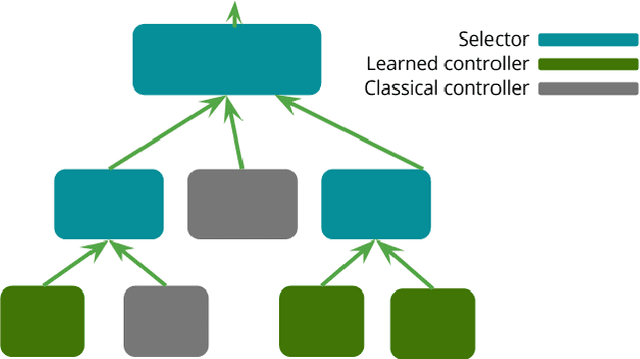Marcos Campos
Reinforcement Learning Agent Training with Goals for Real World Tasks
Jul 21, 2021

Abstract:Reinforcement Learning (RL) is a promising approach for solving various control, optimization, and sequential decision making tasks. However, designing reward functions for complex tasks (e.g., with multiple objectives and safety constraints) can be challenging for most users and usually requires multiple expensive trials (reward function hacking). In this paper we propose a specification language (Inkling Goal Specification) for complex control and optimization tasks, which is very close to natural language and allows a practitioner to focus on problem specification instead of reward function hacking. The core elements of our framework are: (i) mapping the high level language to a predicate temporal logic tailored to control and optimization tasks, (ii) a novel automaton-guided dense reward generation that can be used to drive RL algorithms, and (iii) a set of performance metrics to assess the behavior of the system. We include a set of experiments showing that the proposed method provides great ease of use to specify a wide range of real world tasks; and that the reward generated is able to drive the policy training to achieve the specified goal.
Deep Reinforcement Learning for Dexterous Manipulation with Concept Networks
Sep 20, 2017



Abstract:Deep reinforcement learning yields great results for a large array of problems, but models are generally retrained anew for each new problem to be solved. Prior learning and knowledge are difficult to incorporate when training new models, requiring increasingly longer training as problems become more complex. This is especially problematic for problems with sparse rewards. We provide a solution to these problems by introducing Concept Network Reinforcement Learning (CNRL), a framework which allows us to decompose problems using a multi-level hierarchy. Concepts in a concept network are reusable, and flexible enough to encapsulate feature extractors, skills, or other concept networks. With this hierarchical learning approach, deep reinforcement learning can be used to solve complex tasks in a modular way, through problem decomposition. We demonstrate the strength of CNRL by training a model to grasp a rectangular prism and precisely stack it on top of a cube using a gripper on a Kinova JACO arm, simulated in MuJoCo. Our experiments show that our use of hierarchy results in a 45x reduction in environment interactions compared to the state-of-the-art on this task.
 Add to Chrome
Add to Chrome Add to Firefox
Add to Firefox Add to Edge
Add to Edge